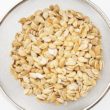Everybody knows that having high cholesterol is a scary matter because it’s something that can clog the arteries that are supplying the heart muscles with blood. But did you know that cholesterol can also clog up other arteries in the body, including those that bring oxygenated blood to the legs?
And that is why it’s not unlikely for you to experience all sorts of problems with your legs if you have high cholesterol, which can be determined by undergoing a lipid profile or lipid test.
Below you will come across certain things you may experience in your legs that can indicate you have high cholesterol. After checking out this article, kindly share it on your various social media sites to give your family members and friends an idea on the real dangers of high cholesterol.
Having high cholesterol means that the bloodstream has more cholesterol than necessary. What makes it a serious matter is the fact that it can cause the arteries to become clogged. Arteries that bring oxygenated blood to the legs can end up clogged, leading to what’s known as peripheral arterial disease or PAD.
The moment that you have PAD, circulation in your lower extremities becomes impeded, and this can cause a wide variety of issues, many of which can keep you from having a normal life.
Some of the things that you may experience in your legs if you have PAD are:
Heaviness
Because the muscles in the legs are deprived of much-needed oxygen, it’s not unlikely for them to feel tired. For most people, this can register as leg heaviness, most especially when they exert themselves.
Pain
Aside from a feeling of heaviness, you may also experience pain in your legs most especially after engaging in physical activities that require you to use your legs a lot. The pain can strike just about any part of your leg, from the buttocks to the calf muscles. It’s possible for only one leg or both to be affected.
Cramps
If you have PAD, it’s very much possible for you to be kept from having a good night’s sleep because of nighttime cramps. Parts of the legs that are usually affected are the toes and heel. Since it’s evidently due to a reduction in the blood supply to the legs, allowing the affected leg to dangle off the side of the bed can provide relief.
Color Changes
Do you notice that your toes are either bluish or pale whenever you are sitting down? It’s a sign that you have poor blood circulation to your legs, and it can be due to a variety of things and PAD is just one of them.
Slow-Growing Hair
A lot of women would do anything just to keep their leg hair from showing up all the time. Well, PAD is something that can delay the growth of leg hair because the hair follicles do not get all the oxygen (and nutrients, too) that they need. But clearly, suffering from PAD is not the best way to keep the legs hair-free.
Delayed Nail Growth
Other than your leg hair, you may also notice that your toenails are also growing so much slower. Again, it’s because the nails’ supply of oxygen and nutrients are cut off. It’s not unlikely for your toenails to thicken, too.
Cold Feet
If your feet are cold, it’s usually a sign that not enough blood is reaching them, and one of the probable reasons for such is PAD. But it’s not just the coldness of the feet that you should worry about if you have PAD. According to experts, PAD may also keep sores or wounds in your feet from healing properly.
Are you experiencing one or more of the above and you don’t know why? It’s a good idea to seek the help of your doctor. If he or she feels that it has something to do with high cholesterol, it’s not unlikely for you to be referred to a cardiologist who is a more suited doctor for the job.












